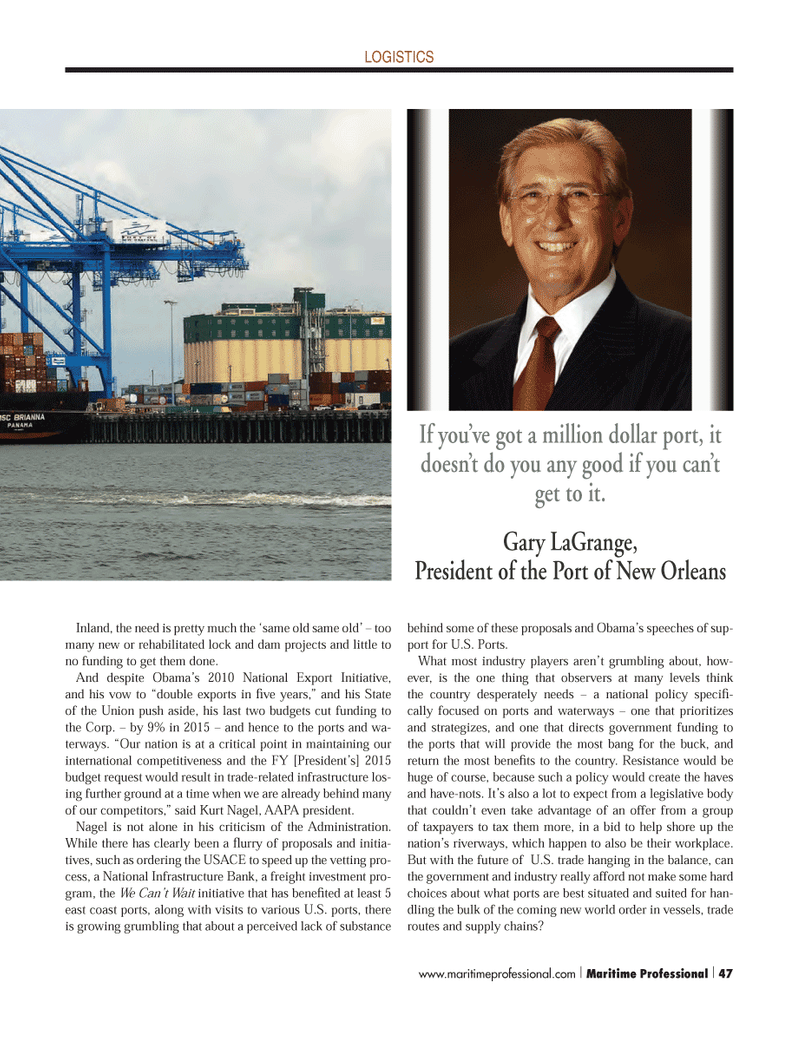
Page 47: of Maritime Logistics Professional Magazine (Q2 2014)
Maritime Risk & Shipping Finance
Read this page in Pdf, Flash or Html5 edition of Q2 2014 Maritime Logistics Professional Magazine
LOGISTICS
Inland, the need is pretty much the ‘same old same old’ – too many new or rehabilitated lock and dam projects and little to no funding to get them done.
And despite Obama’s 2010 National Export Initiative, and his vow to “double exports in fi ve years,” and his State of the Union push aside, his last two budgets cut funding to the Corp. – by 9% in 2015 – and hence to the ports and wa- terways. “Our nation is at a critical point in maintaining our international competitiveness and the FY [President’s] 2015 budget request would result in trade-related infrastructure los- ing further ground at a time when we are already behind many of our competitors,” said Kurt Nagel, AAPA president.
Nagel is not alone in his criticism of the Administration.
While there has clearly been a fl urry of proposals and initia- tives, such as ordering the USACE to speed up the vetting pro- cess, a National Infrastructure Bank, a freight investment pro- gram, the We Can’t Wait initiative that has benefi ted at least 5 east coast ports, along with visits to various U.S. ports, there is growing grumbling that about a perceived lack of substance behind some of these proposals and Obama’s speeches of sup- port for U.S. Ports.
What most industry players aren’t grumbling about, how- ever, is the one thing that observers at many levels think the country desperately needs – a national policy specifi - cally focused on ports and waterways – one that prioritizes and strategizes, and one that directs government funding to the ports that will provide the most bang for the buck, and return the most benefi ts to the country. Resistance would be huge of course, because such a policy would create the haves and have-nots. It’s also a lot to expect from a legislative body that couldn’t even take advantage of an offer from a group of taxpayers to tax them more, in a bid to help shore up the nation’s riverways, which happen to also be their workplace.
But with the future of U.S. trade hanging in the balance, can the government and industry really afford not make some hard choices about what ports are best situated and suited for han- dling the bulk of the coming new world order in vessels, trade routes and supply chains?
If you’ve got a million dollar port, it doesn’t do you any good if you can’t get to it.
Gary LaGrange,
President of the Port of New Orleans www.maritimeprofessional.com | Maritime Professional | 47 34-49 Q2 MP2014.indd 47 5/20/2014 9:49:31 AM

 46
46

 48
48
